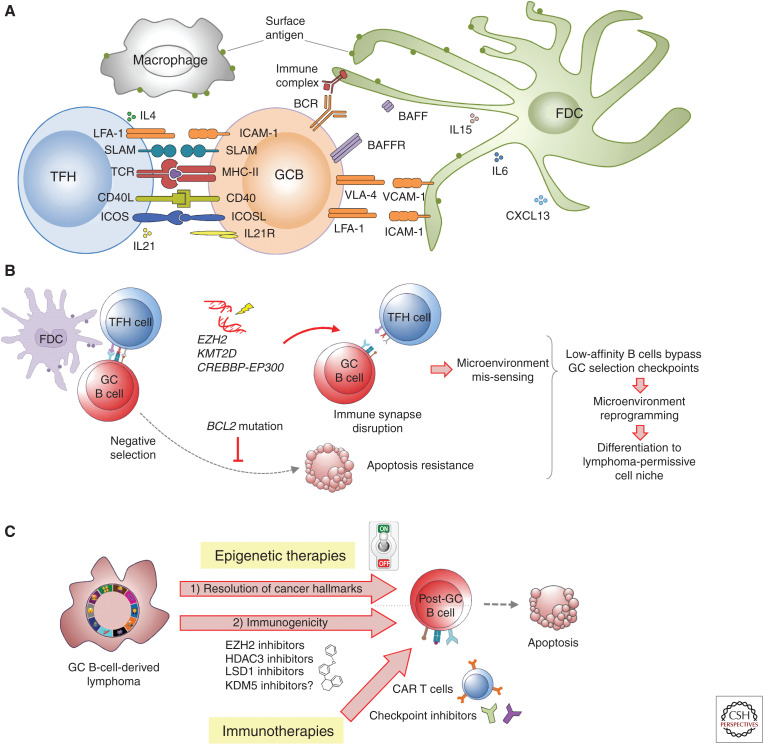Figure 6.
The immune synapse and epigenetic therapy. Like germinal center (GC) B cells, the microenvironment in B-cell malignancies is crucial for the provision of survival and proliferation signals. (A) In both cases, normal GC B cells and malignant B cells interact with T cells, dendritic cells, macrophages, and lymphoid stromal cells (follicular dendritic cells) (Papa and Vinuesa 2018). (B) Mutations in epigenetic regulators and oncogenes such as BCL2 allow low-affinity B cells to survive, leading to the initiation of a prosurvival, immunosuppressive microenvironment in the lymphoid tissue. (C) Although epigenetic therapy can overcome the effect of founder mutations, the microenvironment makes critical contributions to both disease progression and drug resistance/disease relapse. The combination of epigenetic therapy with checkpoint inhibitor therapy can lead to potent antilymphoma effects.

